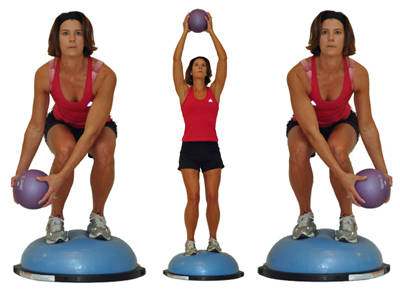After i wrote the last two I thought about some things I should go over.
Some Thoughts:
About “Lifting Weights”: It’s called STRENGTH training….
Too many runners do stuff like this:
thinking that it’s useful…
It’s not…..
It’s stupid and worthless and might be making you slower. If you’re training for marathons you probably don’t have time and energy to waste on worthless exercises.
Strength is about FORCE PRODUCTION and nothing else.
This guy wins over all of your self-proclaimed running Yoda’s.
F=MA…it really is that simple.
Make a muscle that is capable of producing and absorbing more force.
Things like squats, lunges, deadlifts, pullups and bench presses will do that. Standing on one foot twirling a hula hoop will not.
About Changing Exercises: ……..Don’t
Every time you change exercises you take a huge chance that you’ll put yourself …back….because there is a learning curve associated with new exercises.
There is a high probability that new exercises will induce soreness and make the athlete stiff for several days.
Stick with core (main) lifts for the entire cycle. Try to increase the weight 3-5% of a one rep max in that exercise each week for the cycle.
If you change assistance exercises do it after 3-6 weeks.
Yes, eventually you need to change both main lifts and assistance exercises, but not every session, week or even month.
About Soreness/ Stiffness: It’s not a good marker of productivity.
Lots of people like to feel sore the day after workouts. With things like CrossFit, P90X, Insanity all pushing the more is better vibe this balls to the wall approach has become popular and tends to result in soreness.
While a little soreness is ok, that should NEVER be a goal.
“To me, the sign of a really excellent routine is one which places great demands on the athlete, yet produces progressive long-term improvement without soreness, injury or the athlete ever feeling thoroughly depleted. Any fool can create a program that is so demanding that it would virtually kill the toughest Marine or hardiest of elite athletes, but not any fool can create a tough program that produces progress without unnecessary pain.” Mel Siff
You get sore because ….you haven’t fully recovered from the stress placed on the body, not because it was an awesome workout.
New movements induce soreness because of new angles/ muscular stresses and activation patterns.
Progressing toward your goal(s) is the purpose of training, not soreness.




